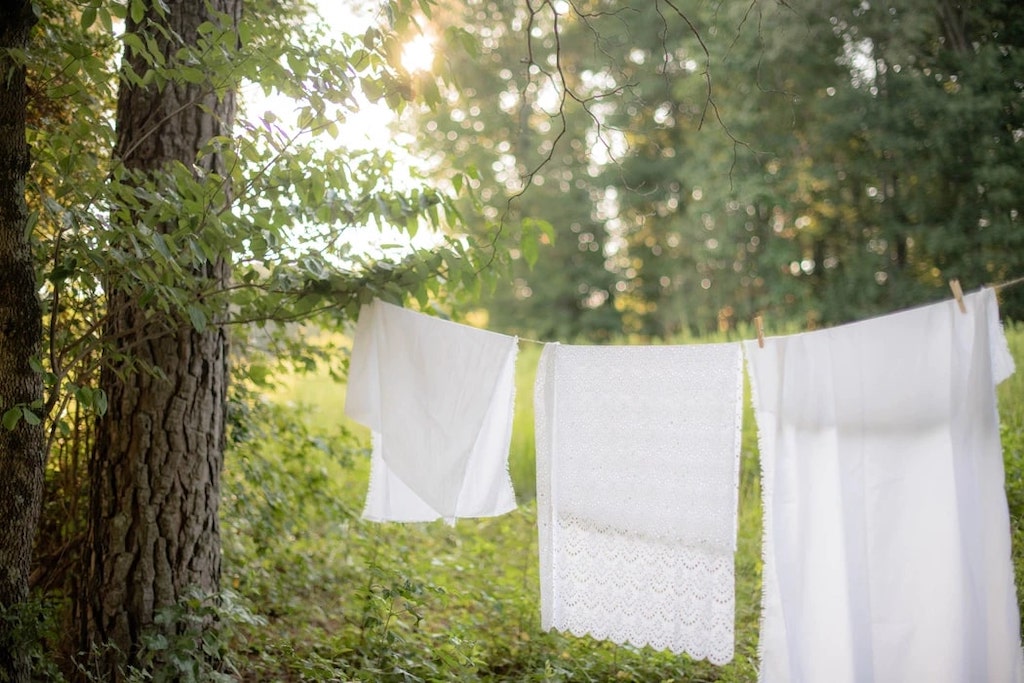Your Cart is Empty

If you don’t have access to a washing machine, and struggle to schlep your bed sheets to a laundromat or dry cleaner, you can easily wash your sheets by hand. Though the process takes longer than throwing your sheets in the washing machine, it is just as effective at cleaning and freshening your bed linens. Follow these simple steps to learn how to wash your bed sheets without a washing machine. All you need is a bathtub, some laundry detergent, and a place to air dry your linens.
You only need to worry about this step if you’re washing multiple sets of sheets at the same time, and they’re different colors. Separate your darks from your lights, like you normally would when doing laundry, so the colors don’t bleed and/or stain the lighter colored sheets. It’s important to soak your light colored sheets before you soak your dark colored sheets, and avoid overloading your bathtub with too many sheets. Doing so will allow less room for agitation. One sheet set per “load” is a good rule of thumb.
Before you fill your tub, make sure to clean out any soap scum or residue that might remain from regular use. Then, check the label on the sheets to determine the appropriate water temperature. If you’re not sure, fill the tub with cold water.
You don’t need any special type of detergent when you’re washing your sheets by hand — whatever you normally use in your washing machine will work. Add 1 tablespoon of detergent per sheet to the tub of water, and stir it in with your hand. Powdered detergent is fine, but you need to make sure it’s dissolved into the water by mixing it in. You don’t want to use too much detergent, as that will make it harder for you to rinse your sheets after you soak them.
Submerge your sheets in the bathtub and soak them for approximately 30 minutes to an hour. To imitate the agitation of a washing machine, stir them by hand every ten minutes or so. Leave your sheets in longer (even overnight) if they seem especially soiled.
Once you’ve soaked your sheets long enough for your liking, drain the bathtub of the soapy, sudsy water. Then, rinse your sheets under the tap with cold water until the water runs clean. To thoroughly remove the soap, you can do each sheet one at a time until you’re sure they’re clean and the water flows clear.
Although this step won’t completely dry out your sheets, it’ll help speed up the process of air drying. Definitely wring out as much water as possible if you’re going to hang up your sheets to dry inside, as this will help you avoid any drips.
Hanging your sheets to dry outside is your best bet. Any sunshine or wind will speed up the drying process, plus the sun’s rays have natural disinfectant properties. Only put your sheets in the sun if they’re white or bright colored, otherwise the colors could fade. If you don’t have an outdoor space to hang your sheets or the weather isn’t cooperative to outdoor air drying, get creative and hang them up inside to dry. You can use anything from the shower curtain rod, two chairs, or a drying rack to hang them up.
If your sheets are particularly stained and you don’t think soaking them is enough — especially if the stain is older — try pretreating your stains. You can use stain remover and pretreat stains like you normally would when using a washing machine. Vinegar is also really great for removing stains, especially sweat stains, on white sheets. Add vinegar to the bathtub with your sheets and laundry detergent, then follow steps five through seven.
Not only does ironing your sheets remove any wrinkles, a hot iron will kill any bacteria that remains on your sheets after the washing and drying process. Plus, it will help soften the crunchy feeling that air dried sheets sometimes have.
Regularly washing your sheets is important, especially for avoiding set-in stains that are harder to get rid of. Washing your sheets without a washing machine is a no-brainer, and by following these guidelines you can get them as fresh and clean as they would get in a washing machine.
